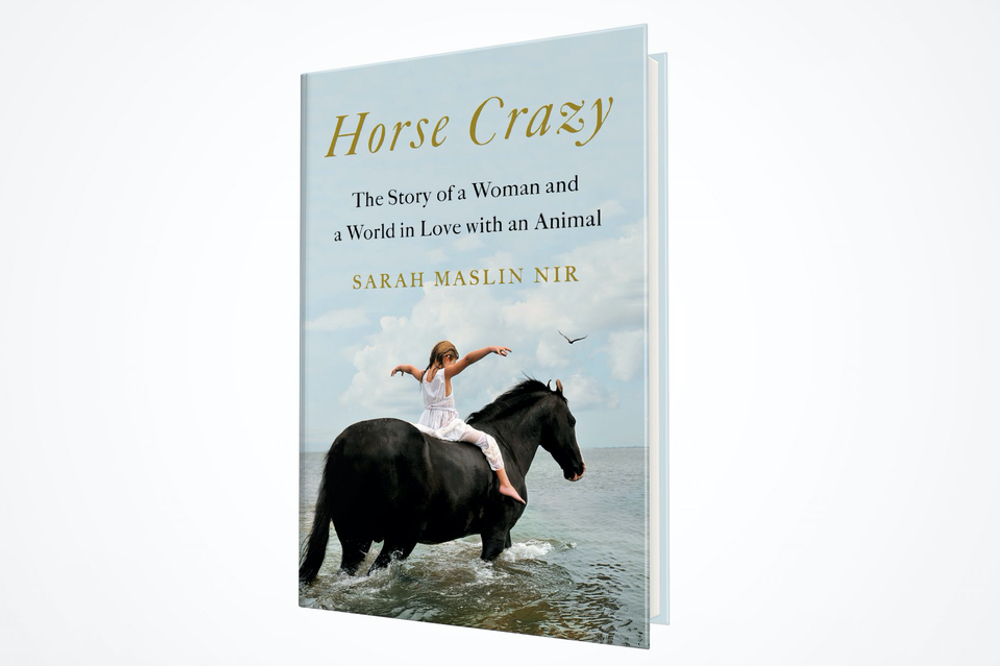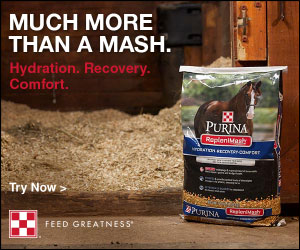Sarah Maslin Nir On NYC Living And Being Horse Crazy

Journalist Sarah Maslin Nir’s connection to horses is a familiar one: she started riding when she was 2 years old and just never stopped.
Sarah, known for her work as a Pulitzer Prize finalist and regular bylines in the New York Times, she covered the SafeSport ban of Jimmy Williams and broke the George Morris scandal. Now she’s about to publish her first book, “Horse Crazy,” a riveting memoir exploring her love for the animal woven with the stories of horsemen and women from all walks of life.
Heels Down Mag caught up with Sarah, who is also an adult amateur hunter rider, to learn more about her story. “Horse Crazy” publishes on Aug. 4 and is available for pre-order now.
What made you want to write something so personal about your connection to horses?
“I’ve never been public about my private obsession with horses. I was always concerned it would undermine me as a serious reporter. Horses are tied to the contentions of the elite – I was afraid it would make me seem like a lightweight or out of touch. So I never shared that I was sneaking off to ride every day at 6 a.m. before work.
It was a good friend of mine who actually inspired me to write the book. He writes about his passion – soccer – and is a formerly trained lawyer and race relations writer. He said passion resonates with people. So he inspired me to come clean about my horse passion.”
Was it difficult to balance being a reporter while writing the book?
“When I pitched the book, one of the last lines said something along the lines of ‘this isn’t my story, this is the story the horses told me.’ The pushback I got from the publisher was: ‘this is your story.’ As journalists, we are genetically programmed not to use the word the ‘I’. The hardest part about all of this was to write about myself. The reporting is a muscle I flex all the time at work. It was a challenge I’d never done before.
I guess the first way I outed myself as a horse girl was reporting on the Jimmy Williams and George Morris SafeSport bans. For George Morris, I was reporting that story for 18 months before he was banned. The New York Times reporting shook the trees that resulted in his expulsion. In those instances, I applied the two things I loved most in the world: horses and journalism. At the time, my horse knowledge was an asset. I speak the language, I walk the walk, hopefully I ride the ride.
I’ve been writing this book all my life. What makes riding so compelling is that you can never get it right. So I’ve been ruminating on horses, trying to do the impossible all this time. I’ve always been thinking it. But before now, I’ve never had anyone to share it with except my fellow horse girls.”
Tell us more about being a horse girl growing up in NYC.
“Horses and I are star-crossed lovers. I’m a country girl with a city upbringing. I’m most comfortable around horses but am most often around taxi cabs. But creatures that are meant for each other find each other. There used to be an urban stable in the city on 89th Street – it was a vertical stable, horses would climb up stairs. It was harrowing to ride in, but we did it. New York City was built by and for horses. The streets are the width of carriages. There was a huge poop crisis in the 1800s. It’s a city established by horses and there are pockets of them here. You just need to know where to look.”
How do you balance riding and showing in your life?
“I do the summer circuit pretty steadily. We have a lot of A shows in our back yard where I keep my horse about 45 minutes away in New Jersey. I don’t show in the winter – a reporter’s salary can’t get you to Wellington.”
In the book, you introduce horsemen and women of all types and backgrounds. Why was this important to you?
“Horses are not in my blood. My family is Jewish. For a long time I felt that this was a world not for me, but for someone waspier and wealthier. I was just the daughter of an immigrant. We’re having that conversation right now about the whiteness of the sport. In the book, there’s a chapter about black cowboys – I worked for a black cowboy in Harlem and that experience really opened my eyes. People have been erased from the story of horses. I may pass in this world because I’m white, but it’s not my world either. Horses may not be in my blood, but they’re in my soul, and I fought to have them in my life. That drew me to seek out the same in other people in my life.
How many people are there who love horses but never touched a horse? When I worked for the cowboy in Harlem, busses of poor school children would come who had never been around horses before, but their hearts were leaping out of their chest to be around one. I didn’t write this book for horse people. I wrote it for anyone who has ever loved a horse. I’m happy to share that love.”
So you ride the Hunters. Why?
“The hunters are the worst. It’s impossible, unbearable. But the constant striving for perfection really appeals to my type A personality, and when you do get it right, it’s just breathtaking. You feel it in your whole body. I’ve never felt that way leaving the jumper ring.”


